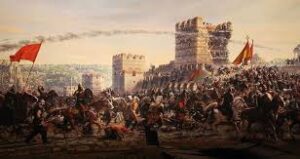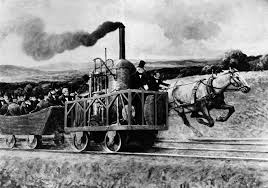Vaša košarica je trenutno prazna!
1453 – Battle for Constantinople Ends

Although the city fell in May, July 4 marked Ottoman efforts to fortify and consolidate power in the newly conquered Constantinople. Sultan Mehmed II began transforming the Byzantine capital into a thriving Ottoman metropolis. Churches were repurposed, walls reinforced, and trade revived. The fall of Constantinople marked the end of the Eastern Roman Empire. It also shifted global power eastward. This event greatly influenced the Renaissance in Western Europe. It signaled the start of a new era in world history. Constantinople became modern-day Istanbul.
1776 – U.S. Declares Independence

On July 4, 1776, the Second Continental Congress officially adopted the Declaration of Independence. Drafted by Thomas Jefferson, it proclaimed the American colonies’ break from British rule. The document outlined core democratic values and grievances against King George III. Celebrated annually as Independence Day, it symbolizes freedom and self-determination. This moment was the birth of the United States of America. It inspired future revolutions and democratic movements. The principles within still guide American governance today. It remains a cornerstone of national identity.
1827 – Slavery Abolished in New York

On July 4, 1827, New York State officially abolished slavery. The date was symbolic, aligning the end of bondage with national independence. Over 10,000 enslaved people were freed. New York was among the last Northern states to do so. The event was a key step in the broader abolitionist movement. Celebrations included parades and speeches by freed African Americans. It highlighted the contradictions in American liberty. The struggle for true freedom continued for decades.
1828 – First American Passenger Train

July 4, 1828, saw the ceremonial start of the Baltimore and Ohio Railroad, America’s first passenger railway. It marked the beginning of the U.S. railroad era. The project aimed to connect the Atlantic coast with the Midwest. Rail travel transformed American commerce, mobility, and expansion. The locomotive “Tom Thumb” became a symbol of innovation. This date marks the dawn of American industrial transportation. It fueled economic growth and westward migration. The U.S. rail network became a backbone of national development.
1962 – NASA Establishes Cape Canaveral Facility

On this day, NASA formally activated its Cape Canaveral operations. It became the primary site for space launches in the U.S. Located in Florida, Cape Canaveral was chosen for its proximity to the equator. It played a key role in the Mercury, Gemini, and Apollo missions. Launchpads and control centers were constructed rapidly. It symbolized the American space race against the USSR. Cape Canaveral remains crucial for space exploration. It helped the U.S. reach the Moon in 1969.
Want to dive deeper into ancient warfare? Don’t miss our articles on Timeline Stories.

